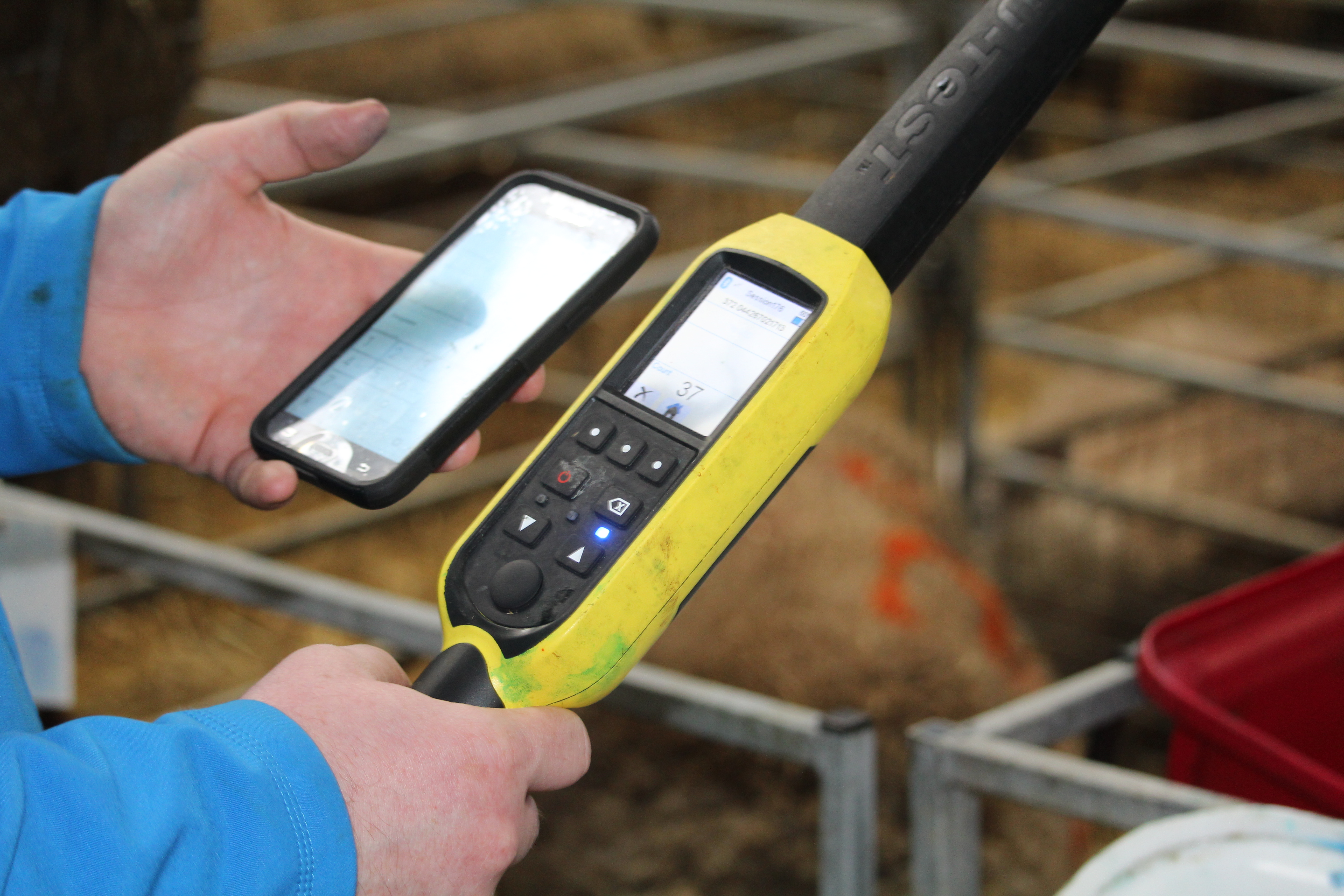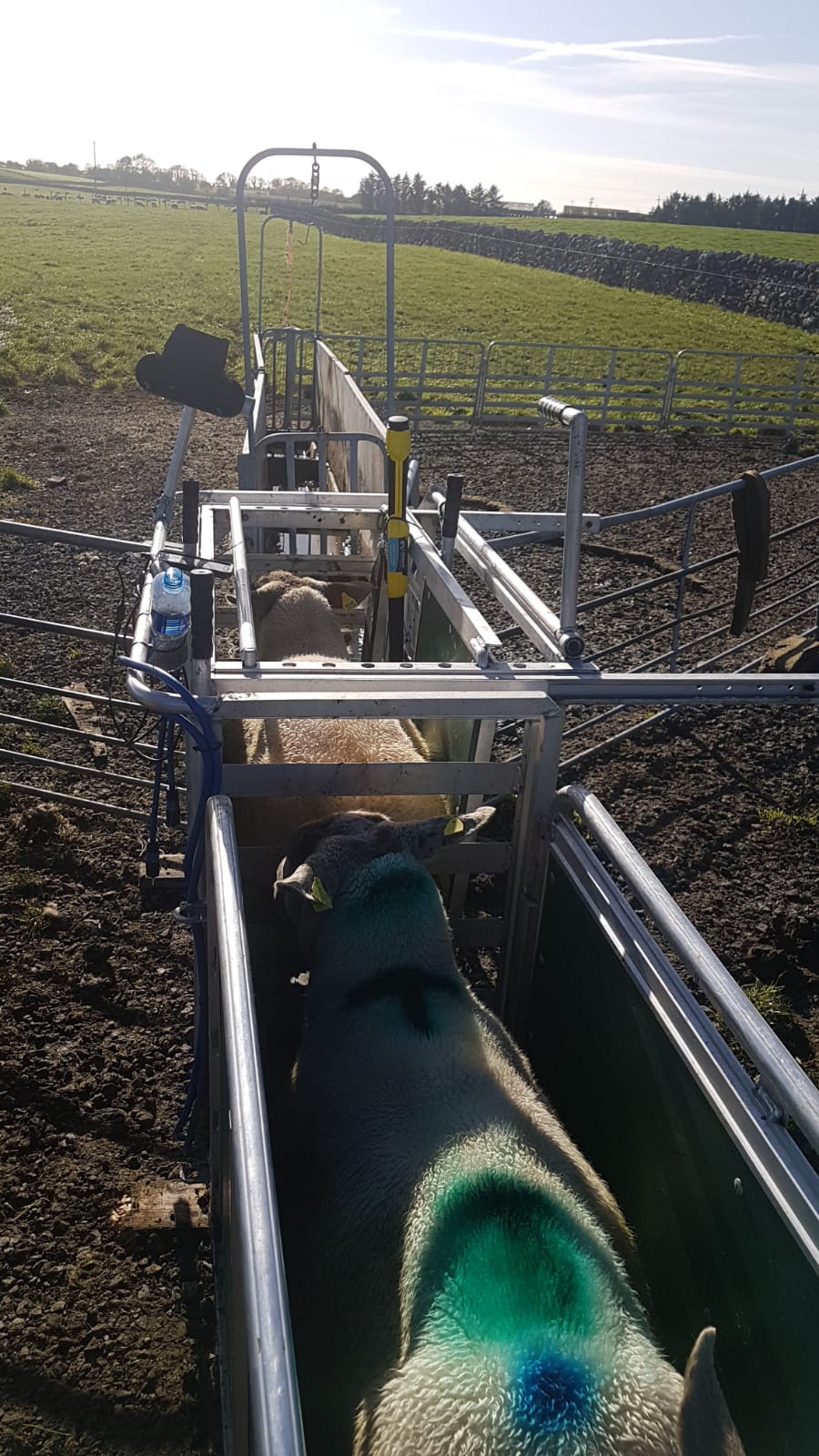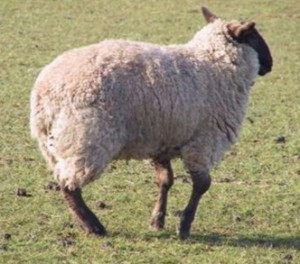Sheep Ireland LambPlus Recording
Collection of data for Sheep Ireland
The following document will outline what data is collected to help calculate the genetic evaluations. This document will also give a brief outline of each trait as well as how and when it is measured. The traits collected can be summarised under four general headings, namely, animal identification, lambing traits, performance traits and health traits.
Animal identification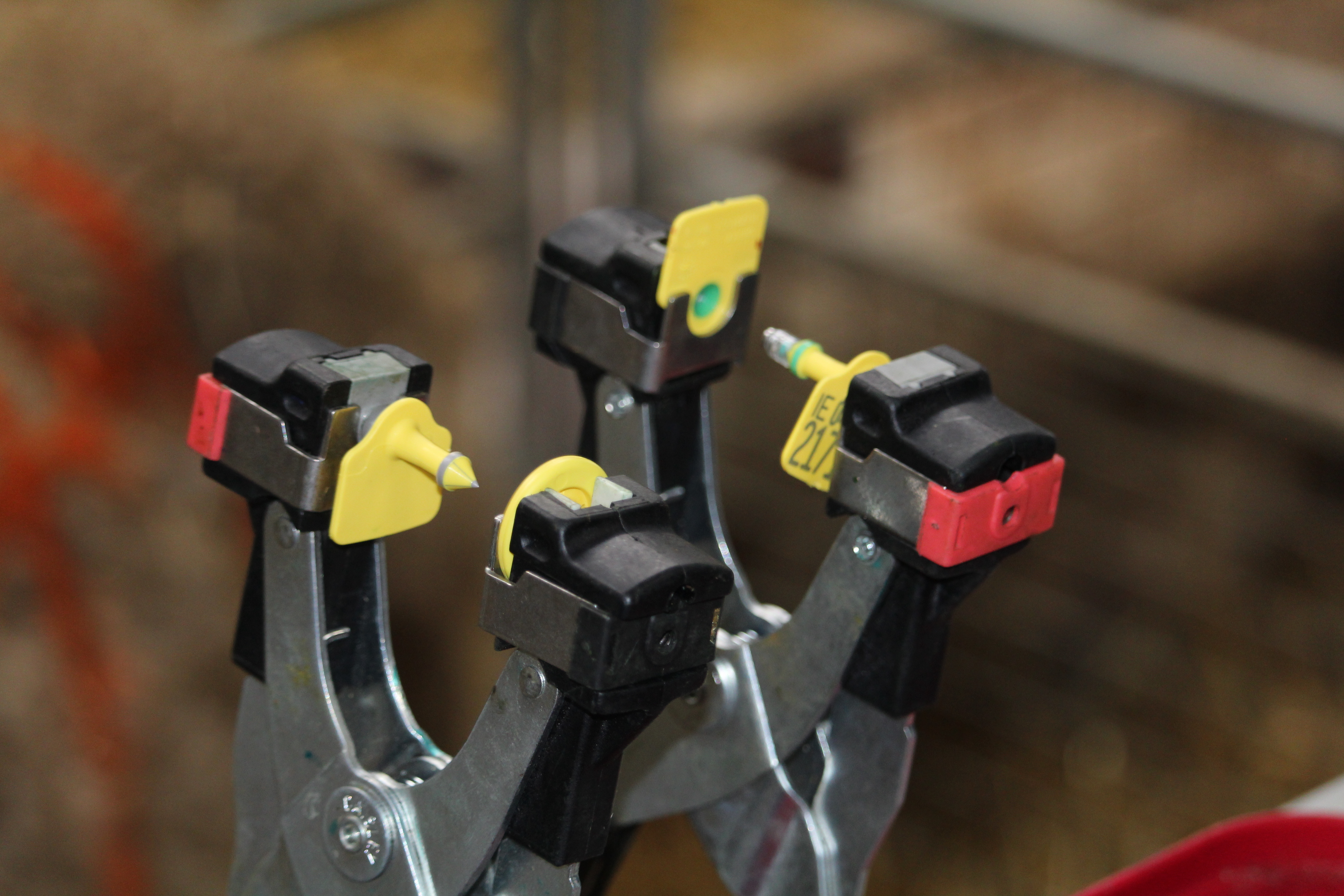
ID – The first piece of information recorded for an animal is their animal ID in the form of an NSIS which will be unique to them for their whole life and will link the animal to its DNA sample and to its parents, siblings and extended relatives.
Sire ID – Recording the sire ID links the lamb to their sire which will also link the animal to his/her siblings, half siblings and other relatives. This link will allow the performance of an animal to affect and be affected by the performance of their parents, siblings and offspring etc. An animal’s sire is recorded based on what ram the ewe was mated to and can be confirmed using genomic testing if there are multiple possible sires.
Dam ID – Recording the dam ID links the lamb to his/her dam which will also link the animal to his/her siblings, half siblings and other relatives. This link will allow the performance of an animal to effect and be affected by the performance of their parents, siblings and offspring etc. An animal’s dam is recorded at the time of birth and can be confirmed using genomic testing if there was a possibility for mis-mothering.
Date of Birth – An animal’s date of birth will be the starting point of animal performance and will be used to calculate average daily gain at various time points and will be used throughout the animal’s life to link it to its contemporary group.
Management Group – Each animal in the evaluation is first compared within his or her management group or flock. Comparing animals within their management group allows a fair comparison to their contemporaries who are managed under the same conditions. Animals that are managed under different conditions to animals in the same flocks can be recorded as being part of a different management groups so they can be fairly accessed in the evaluation.
Off Farm Sales – When an animal is sold the date, reason for the sale and whether the animal was sold at a mart, to an abattoir or to another farmer for breeding is recorded. If the animal was sold to another farmer, the flock designator of the flock receiving the animals is recorded.
Animal Deaths – All animal deaths must be recorded including the date and cause of death.
Lambing traits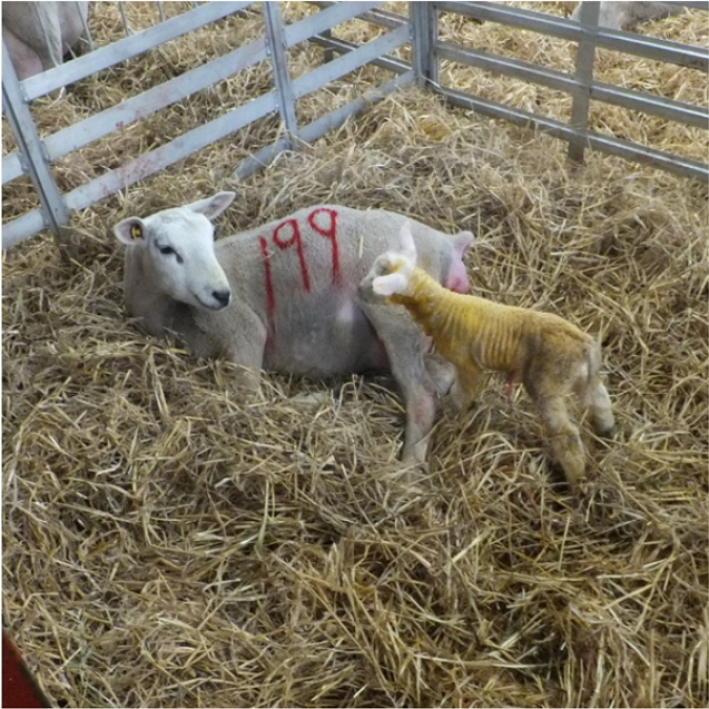
Lambing is a key point in the year for data recording. It is the starting point of data recording for each individual animal and is the time when ewe maternal traits and lambing performance traits are recorded.
Birth Weight – Birth weight is recorded in Kg within 24 hours of birth, this measurement is the starting point for lamb performance and will have an effect on lamb mortality and future performance. Birth Weights must be submitted in KG to the nearest 0.1 kg.
Lamb mortality – Lamb mortality is measured as lambs that are born dead or deaths occurring within 48 hours of birth, which is the period when the majority of lamb mortality occurs. Lamb mortality is a critically important trait as it can be affected by the genetics of the sire, the dam and the lamb itself. Identifying the genetics with high or low instances of lamb mortality will allow selection of animals with lower mortality.
Abortion – All abortions should be recorded through the lambing screen the same as a lambing. If a ewe gives birth to one alive and one dead lamb the dead lamb should be recorded as stillborn.
Barren – Ewes that are barren at lambing time should be recorded as such through the lambing screen.
Lamb vigour – Lamb vigour is a measurement of how active a lamb is at birth and how quick the lamb is to stand to suck. This trait is closely linked to lamb mortality as lambs that receive sufficient colostrum soon after birth have significantly reduced cases of exposure, hypothermia and in turn mortality. Lambs with low vigour scores are also a drain on resources at the busiest time of the year as they require extra attention. All lambs should be scored individually on a scale of 1 (very poor) to 5 (very good) as outlined in Table 1.
| Rank | Lamb Vigour | Description |
| 1 | Very poor | Not standing after 60 minutes |
| 2 | Poor | Standing within 60 minutes |
| 3 | Average | Standing within 30 minutes |
| 4 | Good | Standing within 10 minutes |
| 5 | Very Good | Standing within 5 minutes |
Table 1. Description of ranking lamb vigour
Rearing type – There are many different rearing options for lambs with the most common being the lamb reared by its birth mother, known as a normal rearing. For numerous reasons it may not be possible for all lambs to be reared by their birth mother so there is the option of fostering this lamb to a surrogate mother or to rear the lamb artificially (Bottle fed/Sold as a pet)
Rearing rank –The rearing rank is also recorded as single, twin, triplet or embryo transfer (ET). The rearing rank of a lamb will be considered when calculating animal performance. ET lambs are excluded from the evaluation until the 150-day weight as it is not possible to accurately determine if the animal performance is due to the genetic dam or the dam who gave birth to and reared the lamb.
Number of lambs born – As each ewe lambs the number of lambs born is recorded. This trait includes all lambs the ewe gives birth too, both dead and alive.
Lambing difficulty – Lambing difficulty is recorded for each ewe on a scale of 1 (unassisted) to 4 (significant assistance) as outlined in Table 2. It is very important to record lambing difficulty according to the description in Table 2 because despite different farmers having different opinions on what a “difficult” lambing is, it is important all animals in the evaluation are compared on the same scale.
| Rank | Lambing difficulty | Description |
| 1 | Unassisted |
Ewe lambed down totally unassisted |
| 2 | Voluntary assistance |
The lamb was pulled for convenience purposes, if the lambs’ chances of survival were increased due to human intervention then this would be a score 3 (Slight Assistance) |
| 3 | Slight assistance |
There was no adverse impact on the ewe or lambs, but the lambs’ chances of survival were increased due to human intervention – (reverse presentation/leg back, Large lamb etc…) |
| 4 | Significant assistance | A prolonged intervention by farmer and/or vet, and/or noticeable subsequent impact on ewe and/or lamb performance. Without human intervention a dead ewe and/or lamb would have been the likely outcome. |
Table 2. Description of ranking lambing difficulty
Ewe milk supply – The milk supply of the ewe will affect the survivability and subsequent performance of her lambs. The milk availability of the ewe is measured within 24 hours of lambing and is scored from 1 (very poor) to 5 (very good) as outlined in Table 3.
| Rank | Ewe milk supply | Description |
| 1 | Very poor |
Ewe has no milk at lambing time |
| 2 | Poor |
Ewe has very little milk and not a sufficient amount to feed her lambs adequately |
| 3 | Average | Ewe has just enough milk to feed her lambs at lambing |
| 4 | Good |
Ewe has an adequate amount of milk to feed her lambs |
| 5 | Very good | Ewe has an abundance of milk, more than her lambs can consume |
Table 3. Description of ranking ewe milk supply
Ewe Mothering ability – Another factor that will affect lamb survival and labour requirement at lambing is the mothering ability of the ewe. This trait is a measurement of the intensity of the bond between the ewe and her lambs and how interested and proactive she is in ensuring she dries her lambs, gets them standing and helps them to suck. This trait is measured on a scale of 1 (very poor) to 5 (very good) as described in Table 4.
| Rank | Mothering ability | Description |
| 1 | Very poor |
Ewe has no interest in her lamb |
| 2 | Poor |
Ewe stands well away and is slow to lick the lamb |
| 3 | Average |
Ewe licks lamb and follows the lamb to the lambing pen |
| 4 | Good |
Ewe licks the lamb, is protective and follows closely to lambing pen |
| 5 | Very good | Ewe is very protective, licks lamb immediately, follows lamb very close and bleats for her lamb |
Table 4. Description of ranking mothering ability
Embryo Transfer – If a lamb is a product of embryo transfer (ET) this must be recorded. The genetics of an ET lamb will not be affected by its recipient mother and in turn the lamb performance due to the recipient mother is not reflected in the lambs’ genetics so this must be considered in the evaluations. When recording a lambing a breeder can select to add an ET lamb which will give the option to add the genetic dam’s details. If the recipient ewe is not being performance recorded in the flock a recipient ewe profile can be easily created by selecting add ET lambing on the laming screen.
Performance traits
Weights – The aim of sheep production in Ireland is to produce lamb carcass and in turn weighing animals to assess growth rate is part of identifying high performing animals. There are 5 key weights recorded, namely, birth weight, 40-day weight, 100-day weight (weaning), 150-day weight (muscle and fat scanning) and mature weight. Many farms will also weight animals in between these points to assess performance but these 5 weights are key time points in the animal’s life to determine performance. Although each weight has a specific day associated with it, the lamb can be weighted within a certain time period around that date and the evaluation will adjust the weight accounting for the date. The allowable ranges for each weighing are outline in Table 5.
| Weighing event | Possible age range |
| Birth weight |
Within 24 hours of birth |
| 40-day weight |
20 – 65 days of age |
| 100-day weight |
66 – 120 days of age |
| 150-day weight (M&F scanning) |
121 – 180 days of age |
| Mature weight | 200+ days of age |
Table 5. Description of weighing event and possible age range for each
Ultrasound Muscle and Fat scanning – Muscle and fat scanning is conducted to measure the quality and composition of the carcass which in turn can measure its value. Muscle and fat depth are measured by a Sheep Ireland technician using ultrasound scanning. Muscle and fat depth are recorded at the 13th lumbar vertebrae. Animals are generally between 121 and 180 days of age and over 35kg when recorded. Muscle & fat Depths are recorded in mm.
Days to slaughter – Days to slaughter is a very important trait as the aim of Irish sheep production is lamb carcass as quickly and efficiently as possible. Days to slaughter is calculate using the date of slaughter, the carcass weight and the date of birth previously supplied by the breeder.
Carcass cold weight – Carcass cold weight is provided by the abattoir or farmer and is simply a weight of the carcass when it has been processed to remove the hide, blood, offal etc. This figure is used to calculate the kill out % of each animal for farm reports. It is also used to adjust all lambs to a common carcass weight
Carcass Confirmation – Each carcass is graded by the abattoir for conformation using the EUROP scale. This measurement assesses the muscle content and distribution across the carcass ultimately deciding carcass quality and value. In the EUROP scale each carcass is given a grade from “E” (excellent) to “P” (poor).
Carcass Fat score – Each carcass is also graded by the abattoir for fat cover on a scale from 1 to 5, with a target fat score of 3, 1 being a very lean carcass and 5 being an excessively fat carcass. As with conformation the fat score will affect the carcass quality and overall value.
Lamb Quality score – Lamb quality is assessed by the farmer with each animal being graded on a scale of 1-5 when the animal is between 20 and 180 days of age. Each animal is scored on their confirmation, condition and general quality. 1 is a very poor animal and 5 is an excellent quality animal.
Pregnancy scanning results – Each ewe is pregnancy scanned at between 30 and 90 days of pregnancy using ultrasound scanning. The number of embryos present is recorded, and this is used to measure ewe prolificacy and subsequent embryo loss and lamb mortality. Ewes that are barren at this point should also be recorded.
Not Mated – Animals who are not mated should be recorded as such. For example, ewe lambs not being mated in their first breeding season should be marked as not mated. Recording an animal as not mated will mean the Sheep Ireland data base is aware of their current status and instead of assuming, they were mated and lambed but not recorded.
Body condition score: Body condition score is a measure of the fat reserves of an animal and has been shown to have an effect on the number of lambs born per ewe and the subsequent performance of them lambs. Body condition is measured along the spine and short ribs of the animal and is measured by hand. Body condition is only recorded on mature ewes (+200 days of age) and is recoded on a scale of 1 to 5 as outlined in Table 6. As the ability of the person measuring condition score improves it is possible to distinguish between scores with quarter or half scores also available such as a condition score of 3.25 or 3.5.
| Body condition score | Description | |
| 1 |
Spinous processes are sharp, no fat cover and no muscle cover |
|
| 2 |
Little fat cover with spinous processes less sharp and light muscle cover |
|
| 3 |
Spinous processes are smooth, moderate fat cover and muscle cover |
|
| 4 |
Spinous processes are hard to detect, good fat cover, good muscle cover |
|
| 5 | Fat cover is dense, muscle very full and spinous processes are not detectable | |
Table 6. Description of body condition score range
Health traits
An animal’s performance is affected by both its genetics and its environment. One factor that will have a significant effect on the animal’s performance and the labour requirement of the flock is the animal’s health status. There are many health traits that affect the animal’s overall health status, but the health traits recorded by Ireland are lameness, mastitis, prolapse and dag score. These four health traits have a significant effect on animal performance, are affected by the animal’s genetics and are easily measured meaning they were suitable traits to include in the evaluation.
Lameness – Lameness can be recorded at any point of the year and is recorded on a yes/no basis. If an animal shows any degree of lameness on any foot it is recorded as a yes, regardless of the cause of the lameness. It is recorded on both ewes and lambs.
Mastitis – Mastitis can occur in varying degrees which may lead to reduced milk yield, complete destruction of the udder and ewe death in extreme cases. Mastitis is measured by palpating the udder and checking for lumps post weaning, as well as, any incidences that arise during the year such as at lambing or pre-mating and is recorded on a yes/no basis.
Prolapse – Incidence of prolapse is also recorded on a yes/no basis and covers rectal and vaginal prolapse (pre-lambing) and uterine prolapse (post lambing).
Dag score – Dag score is a measurement of the level of faecal soiling on the rear end of the animal. Dag score can cause additional labour through the need for dagging, preventing and treating flystrike and can also lead to financial penalties in the abattoir for excessive faecal contamination of the hide. Dag score is recorded on a scale of 1 (very dirty) to 5 (Very clean) as outlined in Figure 1.
Figure 1. Dag score scale

